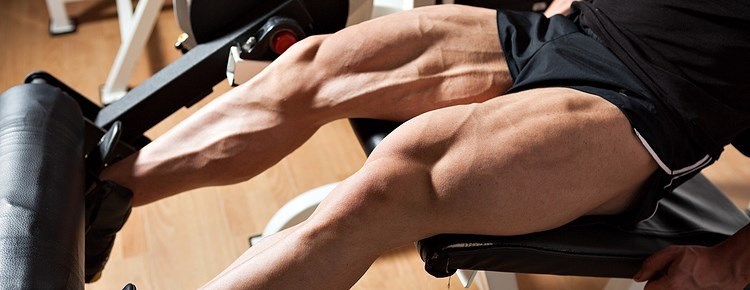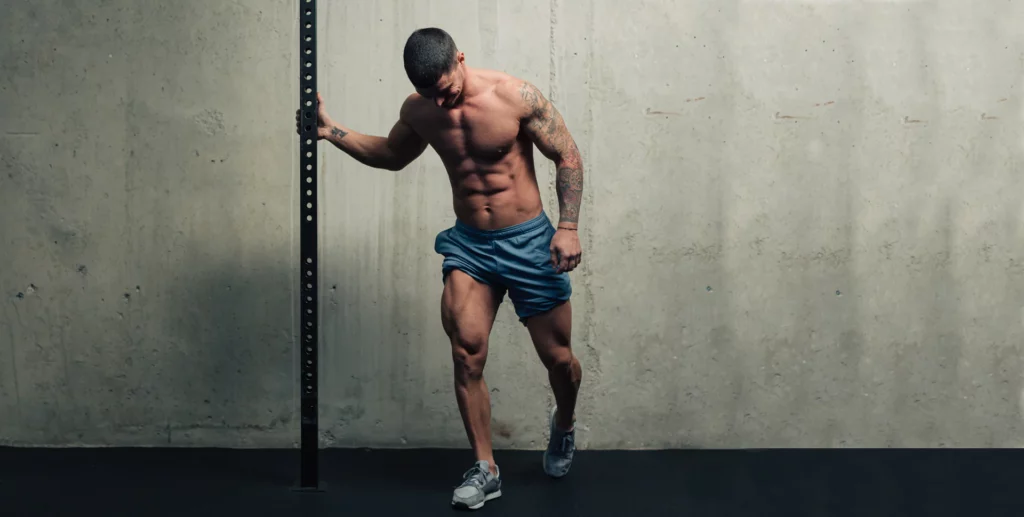Are you looking to take your athletic leg workout? Then this blog is for you!
In this blog post, we explore why leg workouts are so crucial for athletic performance and provide a comprehensive guide to building explosive power and speed with an athletic leg workout for men.
So get ready to hit the gym with confidence and take your performance to new heights!
What is Athletic Leg Workout for Men?
An athletic leg workout for men typically includes exercises that target the major muscles in the legs, including the quadriceps, hamstrings, calves, and glutes. These exercises are designed to build strength, endurance, and overall muscularity in the lower body, which can improve athletic performance, balance, and coordination.
Here are some examples of exercises that are commonly included in an athletic leg workout for men:
- Squats: This compound exercise targets the quadriceps, hamstrings, and glutes. Squats can be performed with a barbell, dumbbells, or bodyweight.
- Deadlifts: This exercise targets the hamstrings, glutes, and lower back. Deadlifts can be performed with a barbell, dumbbells, or kettlebells.
- Lunges: This exercise targets the quadriceps, hamstrings, and glutes. Lunges can be performed with bodyweight, dumbbells, or a barbell.
- Leg Press: This exercise targets the quadriceps, hamstrings, and glutes. Leg press can be performed on a machine or with a resistance band.
- Calf Raises: This exercise targets the calves. Calf raises can be performed with bodyweight or with a machine.
- Box Jumps: This plyometric exercise targets the quadriceps, hamstrings, and glutes. Box jumps can be performed with a box or bench.
It’s important to note that proper form and technique are crucial when performing these exercises to prevent injury and maximize results. It’s recommended to consult with a certified personal trainer before starting any new workout program.

Why Athletic Leg Workout for Men?
There are many reasons why men may want to include athletic leg workouts in their fitness routines. Here are some of the most important reasons:
- Increased Athletic Performance: Strong legs are essential for performing well in a wide range of athletic activities, including running, jumping, and many team sports. By focusing on athletic leg workouts, men can develop the strength, power, and endurance they need to excel in these activities.
- Better Overall Fitness: A strong lower body is essential for overall fitness and health. Strong legs can help improve posture, balance, and stability, and can also help prevent injuries to the knees, hips, and ankles.
- Boosted Metabolism: Leg workouts that target large muscle groups can also help boost metabolism and increase calorie burn. This can be especially beneficial for men looking to lose weight or improve their body composition.
- Improved Mental Health: Exercise has been shown to have many mental health benefits, including reducing stress and anxiety, improving mood, and boosting self-confidence. By incorporating athletic leg workouts into their fitness routine, men can reap these benefits while also improving their physical health.
Overall, athletic leg workouts are an important part of a well-rounded fitness routine for men, offering numerous benefits for both physical and mental health.

How to develop endurance for leg athletic workout?
Developing endurance for leg athletic workouts requires a combination of regular training, proper nutrition, and adequate rest. Here are some tips to help you develop endurance for leg workouts:
- Start with a warm-up: Always start your leg workout with a proper warm-up. A good warm-up will increase your heart rate, improve blood flow, and prepare your muscles for the workout ahead.
- Increase your workout intensity gradually: Gradually increase the intensity of your leg workout over time. This will help your muscles adapt and build endurance. Don’t try to do too much too soon, as this can lead to injury.
- Focus on compound exercises: Compound exercises such as squats, lunges, and deadlifts work multiple muscle groups at once and can help build overall leg strength and endurance.
- Incorporate high-intensity interval training (HIIT): HIIT involves short bursts of intense exercise followed by brief rest periods. This type of training has been shown to improve endurance and overall fitness.
- Incorporate cardio: Cardio exercises such as running, cycling, or swimming can help improve cardiovascular endurance, which will help you perform better during leg workouts.
- Maintain a balanced diet: Eating a balanced diet with sufficient protein, carbohydrates, and healthy fats can help support muscle growth and recovery.
- Get enough rest: Make sure you get enough rest between workouts to allow your muscles to recover and repair. Overtraining can lead to injury and can hinder your progress.
Remember, building endurance takes time, so be patient and consistent with your training. By incorporating these tips into your leg workout routine, you’ll be on your way to building greater leg endurance.
Key nutrition principles for athletic leg workout training
When it comes to athletic leg workout training, nutrition plays a crucial role in fueling the body and supporting muscle growth and recovery. Here are some key nutrition principles to keep in mind:
- Adequate calorie intake: To support muscle growth and maintenance, it’s important to consume enough calories to meet your energy needs. This means consuming enough carbohydrates, protein, and healthy fats to fuel your workouts and promote recovery.
- Sufficient protein intake: Protein is essential for muscle growth and repair, so aim to consume around 1.2-2 grams of protein per kilogram of body weight per day. Good sources of protein include lean meats, poultry, fish, eggs, beans, and legumes.
- Complex carbohydrate intake: Carbohydrates are an important source of energy for workouts, so focus on consuming complex carbohydrates such as whole grains, fruits, and vegetables.
- Proper hydration: Adequate hydration is essential for athletic performance, so make sure you’re drinking plenty of water throughout the day and during your workouts.
- Timing of meals: Consuming a meal or snack that includes carbohydrates and protein within 30 minutes to an hour after your workout can help promote muscle recovery and growth.
- Avoiding processed foods: Processed foods are often high in added sugars, unhealthy fats, and salt, and can negatively impact athletic performance and recovery. Aim to eat a whole food diet that includes plenty of fruits, vegetables, lean protein, and healthy fats.
- Consistency: Consistency is key when it comes to nutrition and athletic performance. Aim to eat a balanced diet that supports your goals on a regular basis, rather than relying on intermittent or sporadic changes.
Importance of hydration for athletic leg workout
Proper hydration is essential for athletes looking to improve their athletic performance, particularly when it comes to leg workouts. Dehydration can lead to muscle cramps, decreased energy levels, and a host of other issues that can negatively impact performance. Athletes should aim to drink plenty of water before, during, and after their workout to maintain optimal hydration levels. Additionally, incorporating electrolyte-rich sports drinks or coconut water can help replenish critical minerals lost through sweat. Ensuring proper hydration not only supports muscular endurance but also aids in post-workout recovery.
Let’s Sum Up
In conclusion, an athletic leg workout is essential for improving your explosive power and speed on the field or court. Remember to warm up properly before starting your workout to prevent any injuries. Incorporate a variety of exercises that target different muscle groups for maximum results.
Endurance training and speed development should also be a part of your overall training plan. Don’t forget about recovery, as it is crucial for preventing injuries and allowing your muscles to rest and grow. And lastly, proper nutrition and choosing the right athletic shoes and gear can make all the difference in reaching your full potential.



